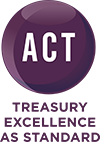Heterogeneous: Difference between revisions
From ACT Wiki
Jump to navigationJump to search
imported>Doug Williamson (Create page. Sources: Linked pages.) |
imported>Doug Williamson (Mend link.) |
||
| (One intermediate revision by the same user not shown) | |||
| Line 19: | Line 19: | ||
== See also == | == See also == | ||
* [[Cohesion]] | |||
* [[Commodity]] | * [[Commodity]] | ||
* [[Differentiation]] | * [[Differentiation]] | ||
* [[ | * [[Homogeneous]] | ||
* [[Inclusion]] | * [[Inclusion]] | ||
* [[Lifelong learning]] | * [[Lifelong learning]] | ||
* [[Organisation for Economic Co-operation and Development]] (OECD) | * [[Organisation for Economic Co-operation and Development]] (OECD) | ||
Latest revision as of 09:57, 10 July 2022
Differentiation.
Diverse in character or content.
(The opposite of homogeneous.)
- Heterogeneity should be managed to ensure cohesion - OECD
- "Lifelong learning... involves individuals both young and old, with different experiences, motivations and attitudes...
- It is therefore essential to diversify the content and provision of learning, to account for the inherently heterogeneous nature of learning and learners.
- However, heterogeneity in learners’ profiles, learning objectives, socio-demographic characteristics, attitudes towards learning and learning goals should be managed so that it does not lead to a strong separation in learning pathways, with important risks to social cohesion and inclusiveness."
- OECD Skills Outlook 2021 : Learning for Life.
See also
- Cohesion
- Commodity
- Differentiation
- Homogeneous
- Inclusion
- Lifelong learning
- Organisation for Economic Co-operation and Development (OECD)
